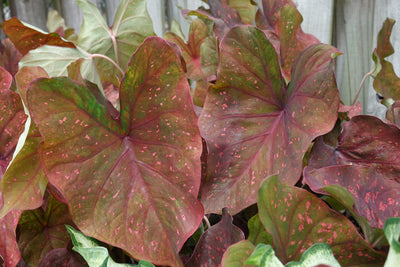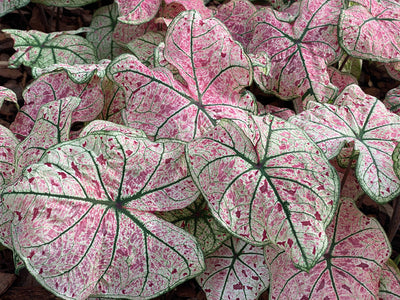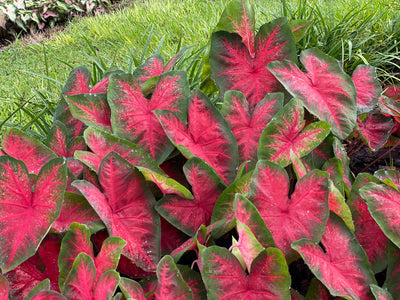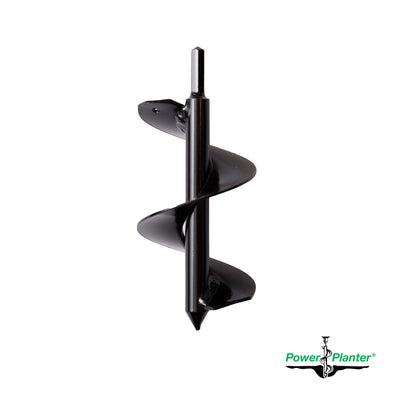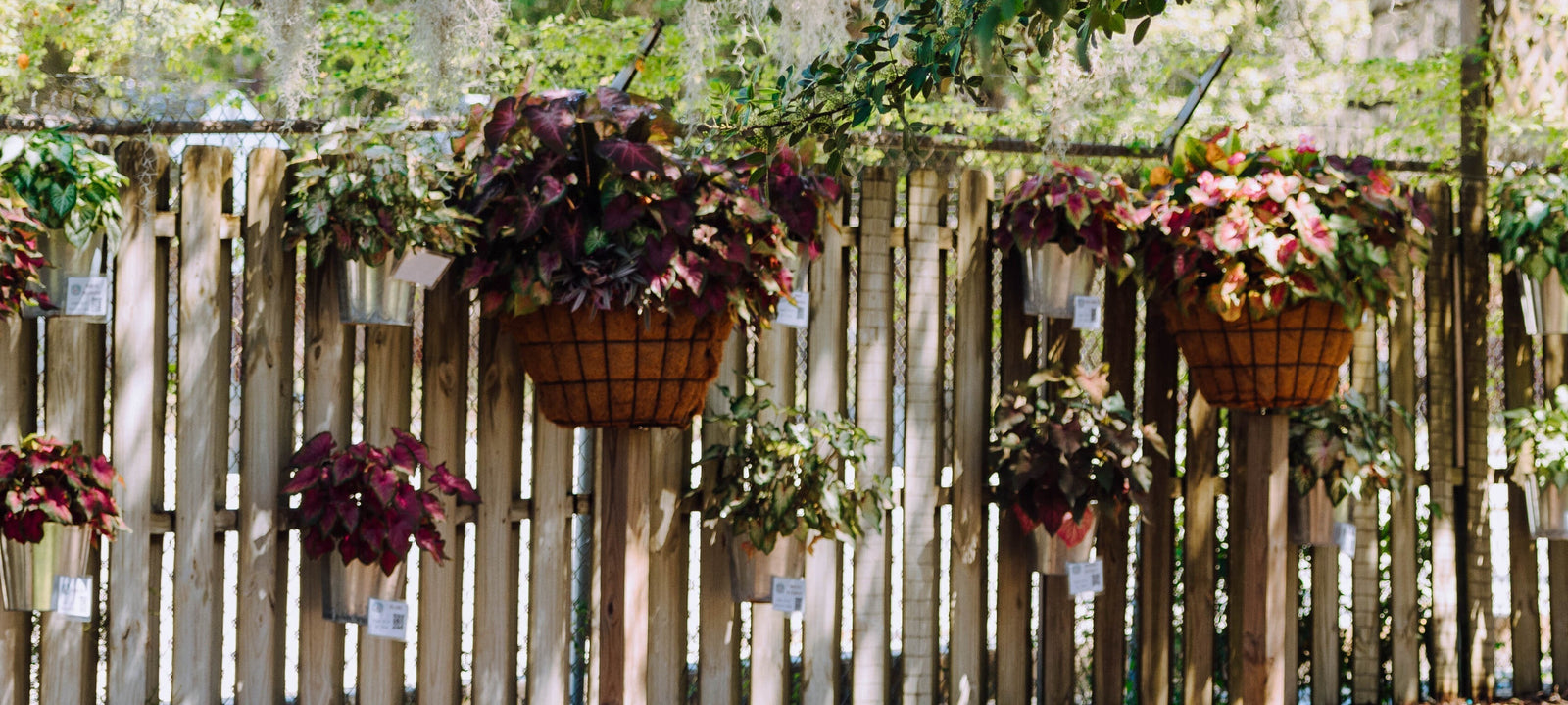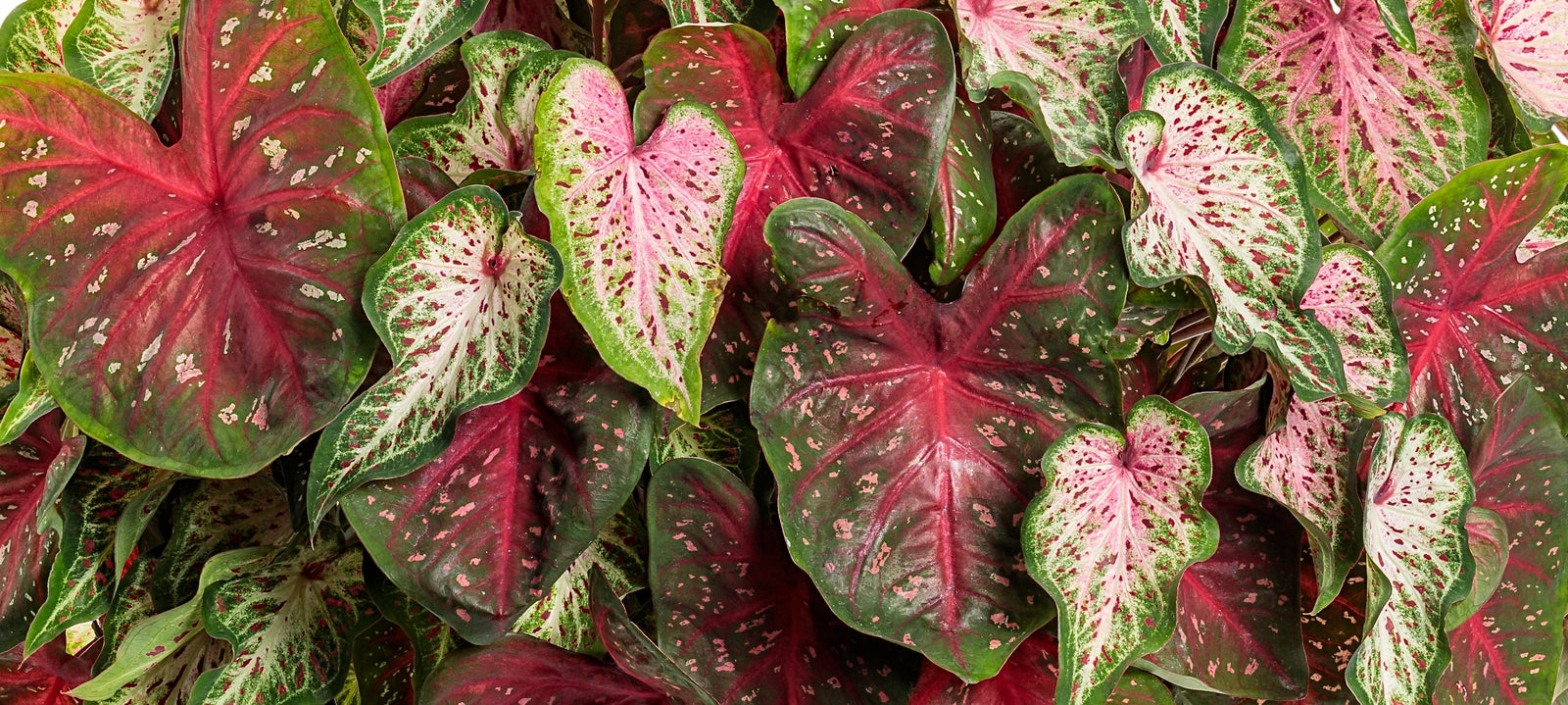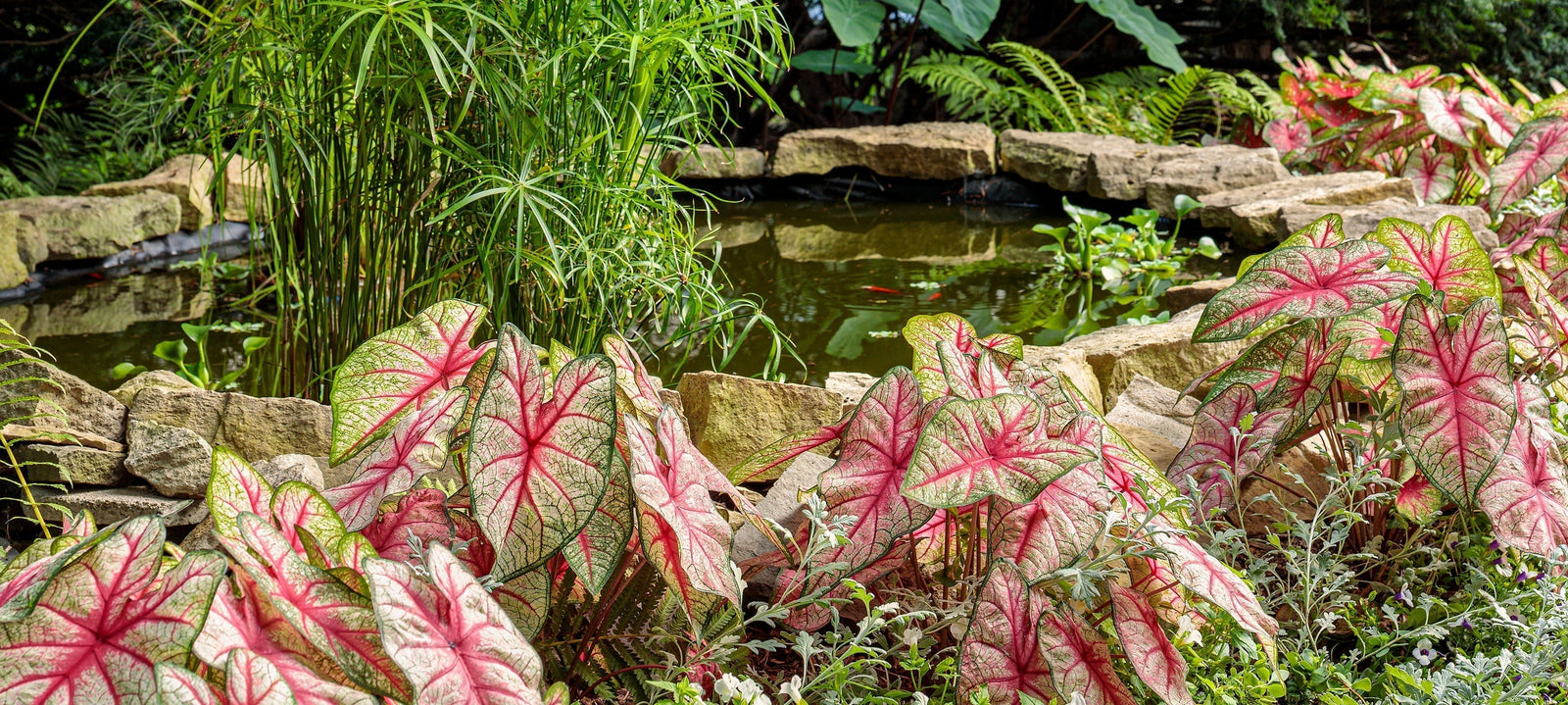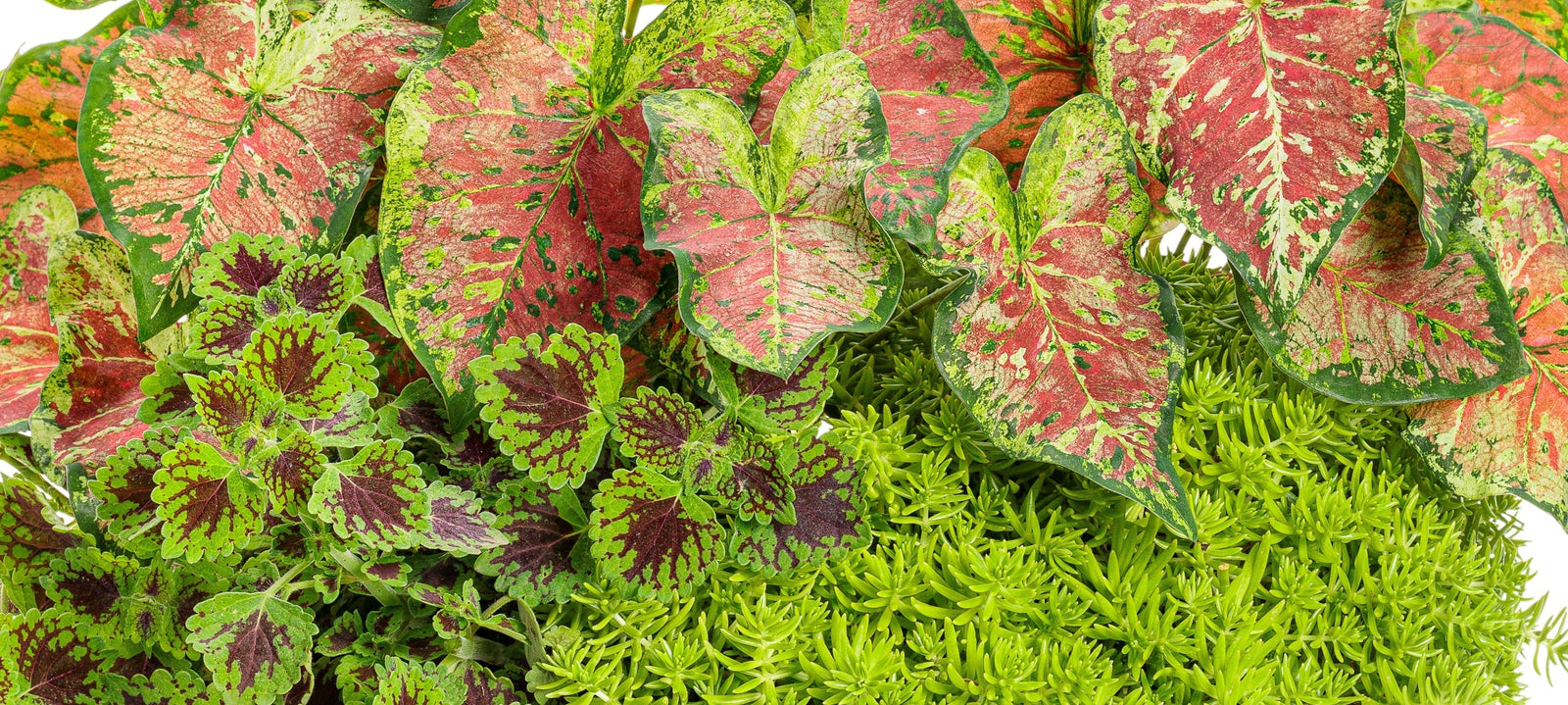Should You Prune Caladiums? How to Trim Without Damaging Your Plant
April 04, 2025
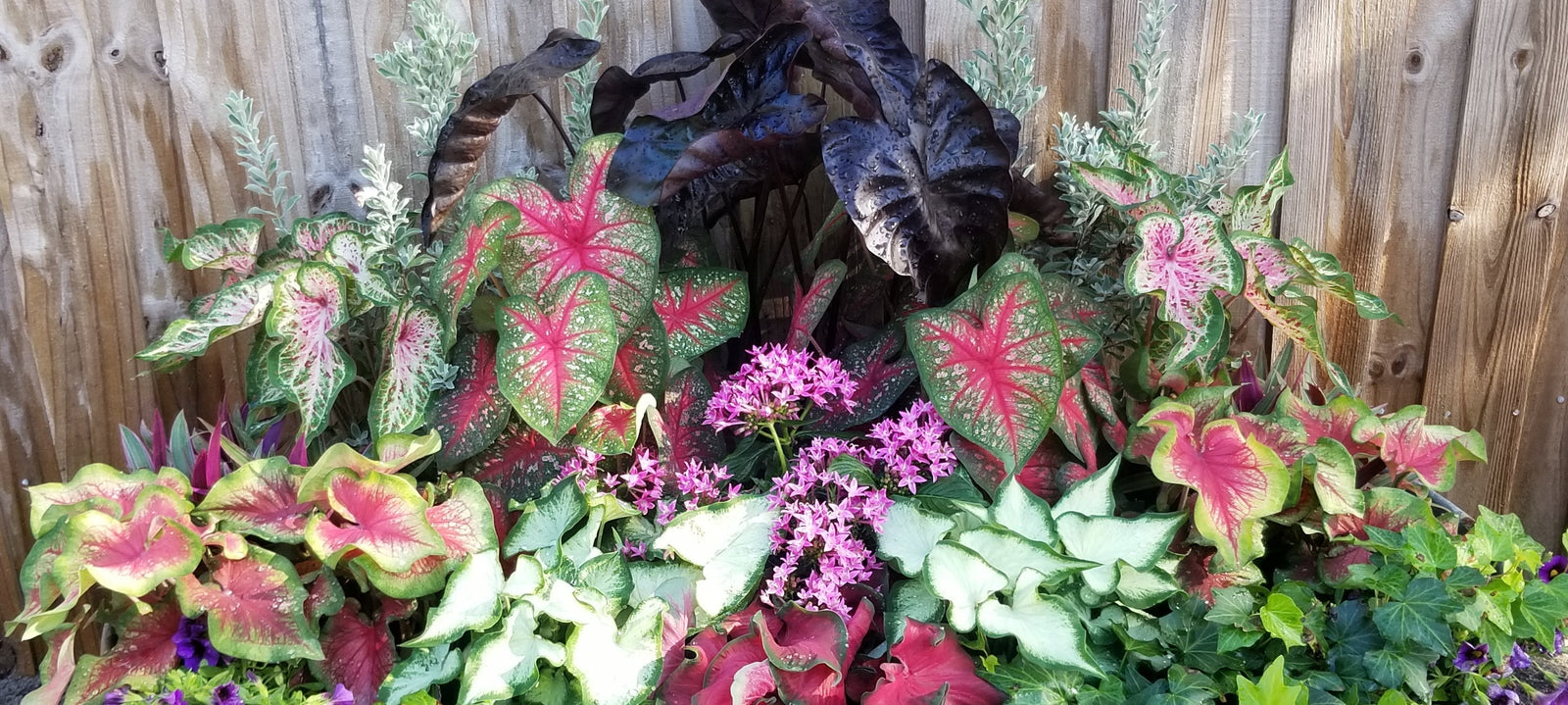
Caladiums have a full, lush growing habit people love. Sometimes, to keep your caladium healthy and control its shape, you may want to give it a light trim. Here’s how to prune your caladium to keep it healthy and beautiful.
Do caladiums need pruning?
Caladiums don’t require pruning, but it can help the plant grow healthy and full.
Trimming off dead or wilting leaves encourages new growth and keeps a consistent, vibrant look. It also improves air circulation, which keeps fungus at bay and allows more sunlight to reach the lower leaves.
Caladiums in containers can become leggy; occasionally pruning them back encourages a full, compact shape.
The best way to ensure a full-looking caladium is to de-eye the bulb before planting. De-eyeing removes the dominant bud from the bulb. This means that instead of a couple of large leaves and a few smaller leaves, the bulb will put out many more evenly sized leaves.
Signs it’s time to prune your caladium
If you observe any of these signs on your caladium, it may benefit from a light pruning:
-
Lower leaves are small, wilted, or discolored – this could indicate they aren’t getting enough sun because they’re covered by larger top leaves.
-
Growth seems stunted or congested.
-
There are leaves that are visibly damaged from pests, disease, or injury. Damaged leaves can be a haven for pests and disease and should be removed.
The best time to prune a caladium
Normally, pruning is not required until fall, when older leaves are fading as the plant prepares to go dormant.
Wait until leaves have fully opened and show symptoms of damage or fading before trimming.
In summer, you can selectively trim your caladium to control its shape and size. Remove dead and damaged leaves as you see them throughout the growing season.
Caladium pruning techniques
There are several techniques you can use to prune your caladium, depending on what you’re trying to do.
Control size by cutting back
Cutting back removes the topmost leaves of a caladium to reduce its height. It’s a useful technique if you’re trying to keep a uniform look in your planting.
Control fullness with thinning
The bushiness of a caladium is one of its charms, but it’s possible for a plant to grow too full. This can cause it to outgrow its container or stunt the growth of lower leaves that don’t receive enough sunlight.
To thin a caladium, look for very large leaves that are hiding other leaves. Selectively trim just a few leaves at a time, stepping back to look at the plant as a whole between cuts to avoid trimming too much.
How to prune caladiums
To prevent over-pruning, make a plan before you start cutting. Examine the plant and decide where you are going to make your cuts.
Remove yellow, brown, damaged, or dead leaves first. Then step back and assess the plant again before cutting back or thinning.
It’s easy to get carried away while pruning and cut far more than you intended. Keep yourself in check by being mindful and reassessing every couple of cuts to decide if you’ve trimmed enough.
Use a sharp, sterile pair of pruning shears. Don’t use kitchen scissors; get a tool specifically designed for pruning plants without crushing the stems. The blades should be sharp enough to make a clean cut.
It’s also a good idea to wear gloves while pruning your caladium. Caladium sap contains calcium oxalate, an irritating substance that can cause itching if it gets on your hands and irritation if you later touch your eyes, nose, or mouth.
In between cuts, sterilize your shears to avoid spreading disease. You can do this by dipping them in a solution of one part bleach to ten parts water or by wiping them down with rubbing alcohol.
To make your cuts, gently grasp the leaf and make a clean cut just above where the leaf stem joins the main stem. Be careful to avoid tearing, crushing, or damaging the main stem or neighboring leaves.
Caring for your caladium after pruning
To the plant, pruning isn’t so much like a haircut as it is like minor surgery. It might go into temporary shock. Give it time to recover by dialing back fertilizing and watering for a few days.
Caladiums like high humidity. If you’re not in a naturally humid climate, mist your plant in the morning hours to help it recover.
Keep a sharp eye out for pests and disease while the cuts heal.
Avoid these mistakes when pruning caladiums
To keep your caladium happy and healthy, avoid these common mistakes:
-
Don’t remove more than one-third of the plant’s foliage. Ideally, you shouldn’t even remove that much. Remember, it’s a trim, not a mowing.
-
Cut the leaf stem just above the main stem, leaving a little bit of leaf stem behind. Cutting too close to the main stem risks damaging it.
-
Don’t remove leaves too early. Wait until they are completely unfurled.
-
Use clean, sharp pruning shears. Dull shears crush the stem and damage the plant, and dirty shears run the risk of introducing disease.
Caladiums shouldn’t be treated like a topiary, sheared into unnatural shapes. These tropical beauties are at their best when allowed to grow in their natural, exuberant shape.
If your pruning removes healthy leaves from your plant, don’t throw them away – caladium leaves make excellent cut flowers! See how to use them to bring unexpected flair to your floral arrangements.

